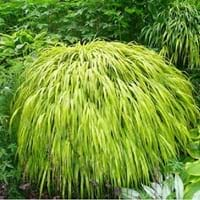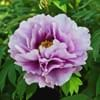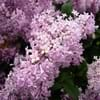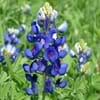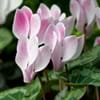Life Span
Perennial
Perennial
Type
Flowering Plants, Shrubs
Grass
Origin
Asia, North America, Southern Europe
Japan
Types
Aristocrat, Buckeye Belle, Henry Bockstoce , Abalone Pearl, Coral Supreme, Cytherea, Charlie's White
Benikaze, Nicolas, All Gold, Albostriata
Habitat
Hillside, Woods
gardens, Shaded sites, Temperate Regions
USDA Hardiness Zone
3-9
5-9
Sunset Zone
A3, 1a, 1b, 2a, 2b, 3a, 3b, 4, 5, 6, 7, 8, 9, 10, 11, 12, 13, 14, 15, 16, 17, 18, 19, 20, 22
1a, 1b, 2a, 2b, 3a, 3b, 4, 5, 6, 7, 8, 9, 10, 11, 12, 13, 14, 15, 16, 17, 18, 19, 20, 21, 22, 23, 24
Habit
Clump-Forming
Clump-Forming
Flower Color
Pink, Red, White
Several shades of Green
Flower Color Modifier
Not Available
Bicolor
Fruit Color
Not Available
Non Fruiting Plant
Leaf Color in Spring
Dark Green
Green, Lime Green
Leaf Color in Summer
Dark Green, Green
Light Green
Leaf Color in Fall
Bronze, Dark Green, Green
Yellow, Red, Orange, Yellow green, Pink, Orange Red
Leaf Color in Winter
Not Available
Not Available
Leaf Shape
Compound
Long linear and narrow
Plant Season
Spring
Spring, Summer, Fall
Sunlight
Full Sun, Part sun
Full Sun, Partial Sun, Partial shade
The pH of Soil
Neutral
Acidic, Neutral
Soil Drainage
Well drained
Well drained
Bloom Time
Spring, Summer
Late Summer, Early Fall, Fall
Tolerances
Not Available
Not Available
Where to Plant?
Ground, Pot
Container, Ground
How to Plant?
Grafting, Seedlings, Stem Planting, Transplanting
Divison
Plant Maintenance
Medium
Low
Watering Requirements
Does not require lot of watering, It cannot sustain wet-feet, Keep the ground moist but not water-logged, Needs watering once a week, Prefer drip-irrigation instead of Over-head watering, Water occasionally
Average Water Needs, Requires regular watering
In Summer
Lots of watering
Lots of watering
In Spring
Moderate
Average Water
In Winter
Average Water
Average Water
Soil pH
Neutral
Acidic, Neutral
Soil Drainage Capacity
Well drained
Well drained
Sun Exposure
Full Sun, Part sun
Full Sun, Partial Sun, Partial shade
Pruning
Do not prune during shooting season, Prune to control growth, Remove dead or diseased plant parts, Remove deadheads
Remove damaged leaves, Remove dead leaves
Fertilizers
All-Purpose Liquid Fertilizer
fertilize in growing season
Pests and Diseases
Botrytis Blight, Leaf spot, Stem spot, Viruses
Pests and diseases free, Red blotch
Plant Tolerance
Not Available
Shade areas
Flowers
Yes
Insignificant
Flower Petal Number
Semi-Double
Single
Foliage Texture
Coarse
Medium
Foliage Sheen
Glossy
Matte
Attracts
Ants
Not Available
Allergy
Not Available
no allergic reactions
Aesthetic Uses
Beautification, Bouquets, Showy Purposes, Used for decorating walls, fences, gates, hedges, etc.
Cottage Garden, Showy Purposes, Water gardening
Beauty Benefits
Not Available
No Beauty Benefits
Environmental Uses
Air purification
No fertilizer, pesticides, or herbicides needed
Medicinal Uses
Cough, Gout, Headache, Heartburn, Kidney problems, Upset stomach, Urinary tract problems
No Medicinal Use
Part of Plant Used
Flowers, Root, Seeds
Not Available
Other Uses
Showy Purposes, Used as Ornamental plant, Used for fragrance
Not Available
Used As Indoor Plant
No
No
Used As Outdoor Plant
Yes
Yes
Garden Design
Feature Plant, Foundation, Mixed Border
Container, Edging, Mixed Border, Rock Garden / Wall
Botanical Name
Paeonia suffruticosa
HAKONECHLOA macra
Common Name
Peony
Hakone Grass
In Hindi
Peony
hakone grass
In German
Pfingstrose
Hakone Gras
In French
Pivoine
Hakone herbe
In Spanish
Peonía
hierba Hakone
In Greek
παιωνία
Hakone γρασίδι
In Portuguese
Peônia
Hakone grama
In Polish
Piwonia
Hakone trawa
In Latin
AGLAOPHOTIS
Hakone herba
Phylum
Magnoliophyta
Magnoliophyta
Class
Magnoliopsida
Liliopsida
Order
Not Available
Cyperales
Family
Paeoniaceae
Poaceae
Genus
Paeonia
Hakonechloa
Clade
Angiosperms, Core eudicots, Eudicots
Angiosperms, Commelinids, Monocots
Tribe
Not Available
Not Available
Subfamily
Not Available
Not Available
Number of Species
Not Available
Season and Care of Peony and Hakone Grass
Season and care of Peony and Hakone Grass is important to know. While considering everything about Peony and Hakone Grass Care, growing season is an essential factor. Peony season is Spring and Hakone Grass season is Spring. The type of soil for Peony is Loamy and for Hakone Grass is Loam while the PH of soil for Peony is Neutral and for Hakone Grass is Acidic, Neutral.
Peony and Hakone Grass Physical Information
Peony and Hakone Grass physical information is very important for comparison. Peony height is 76.20 cm and width 61.00 cm whereas Hakone Grass height is 30.50 cm and width 61.00 cm. The color specification of Peony and Hakone Grass are as follows:
Peony flower color: Pink, Red and White
Peony leaf color: Dark Green
Hakone Grass flower color: Several shades of Green
- Hakone Grass leaf color: Green and Lime Green
Care of Peony and Hakone Grass
Care of Peony and Hakone Grass include pruning, fertilizers, watering etc. Peony pruning is done Do not prune during shooting season, Prune to control growth, Remove dead or diseased plant parts and Remove deadheads and Hakone Grass pruning is done Remove damaged leaves and Remove dead leaves. In summer Peony needs Lots of watering and in winter, it needs Average Water. Whereas, in summer Hakone Grass needs Lots of watering and in winter, it needs Average Water.

